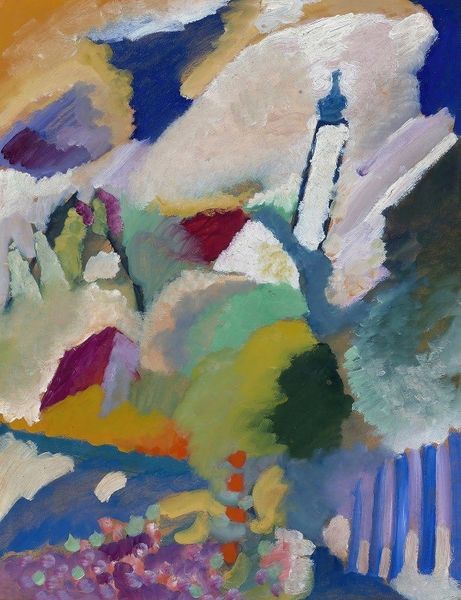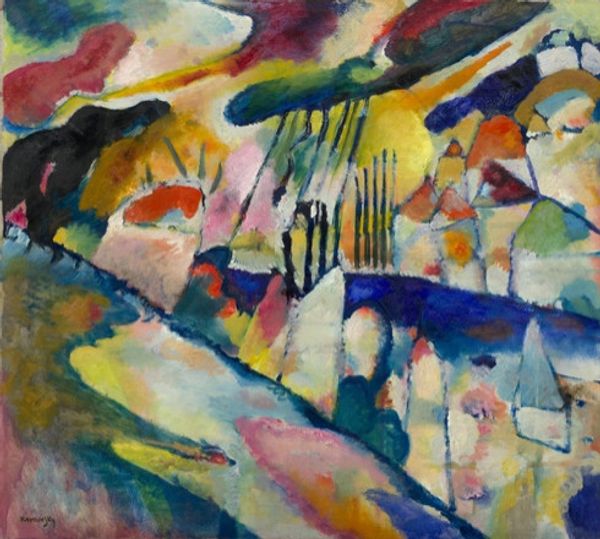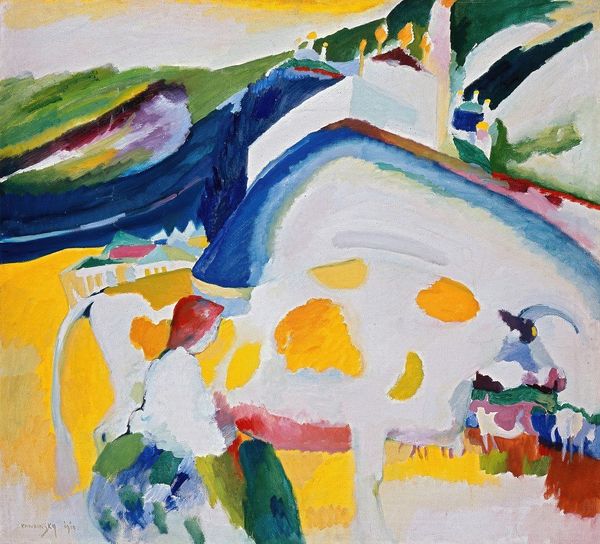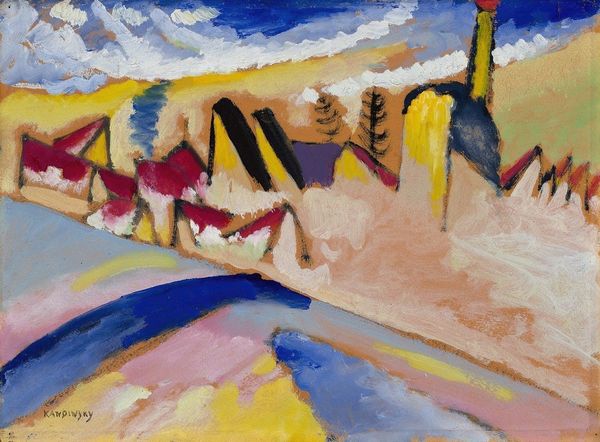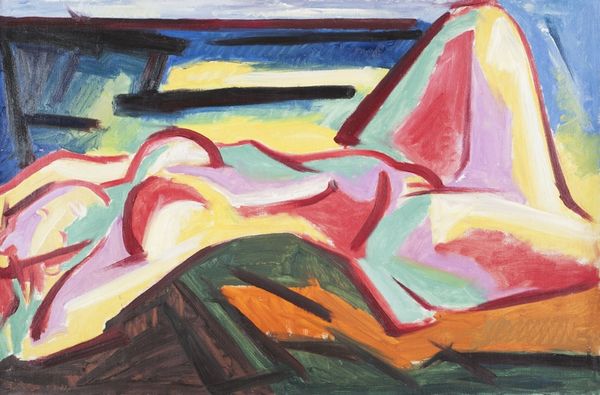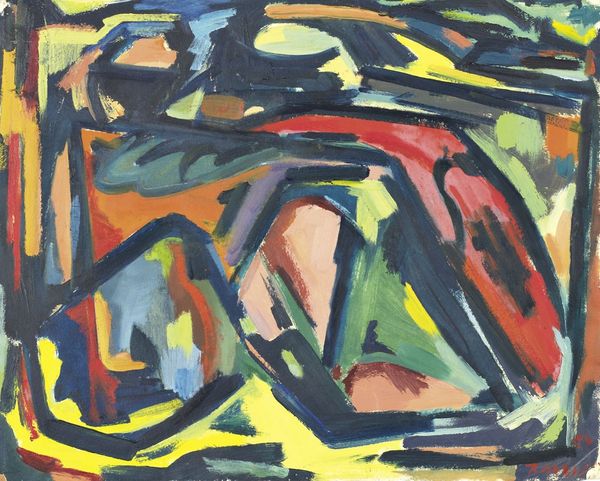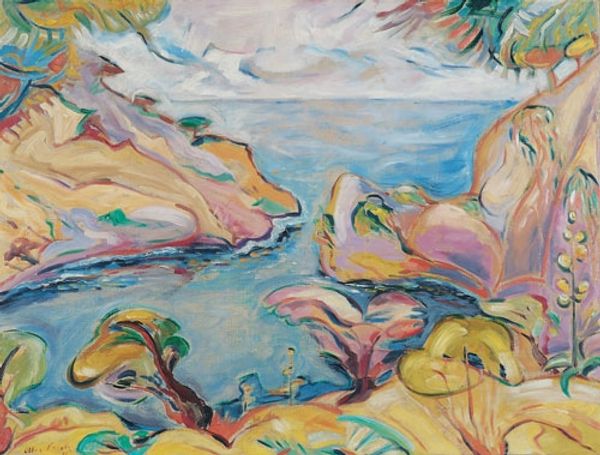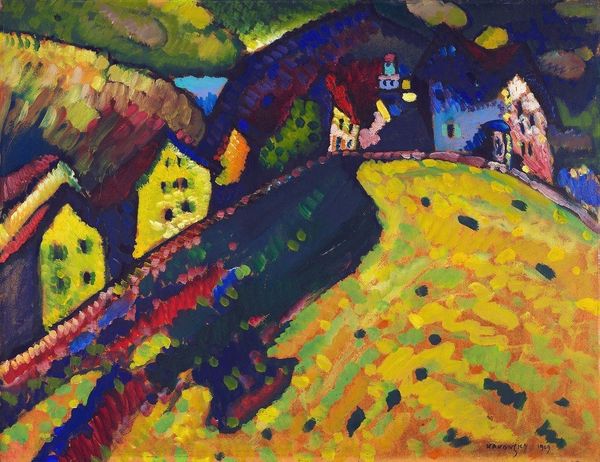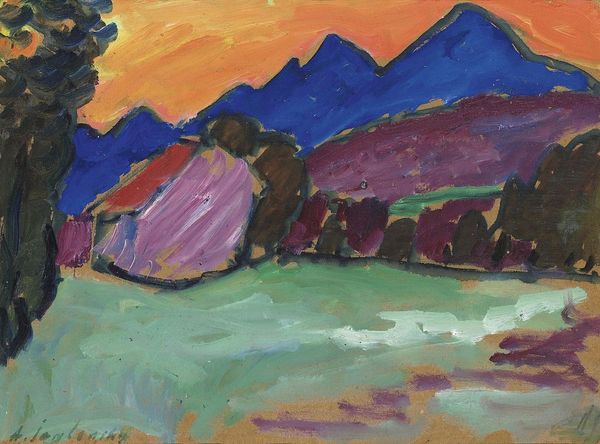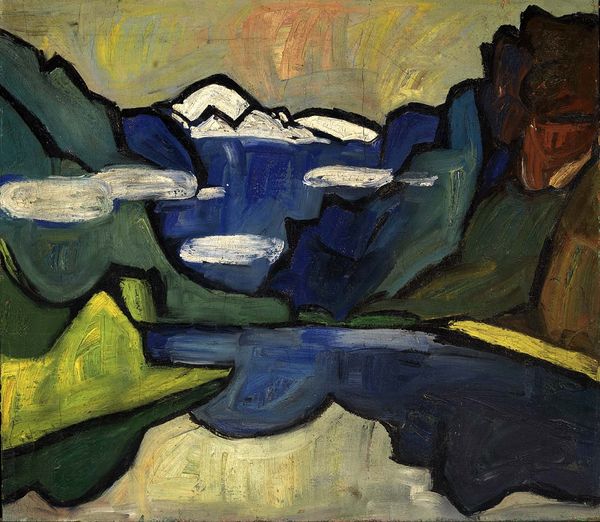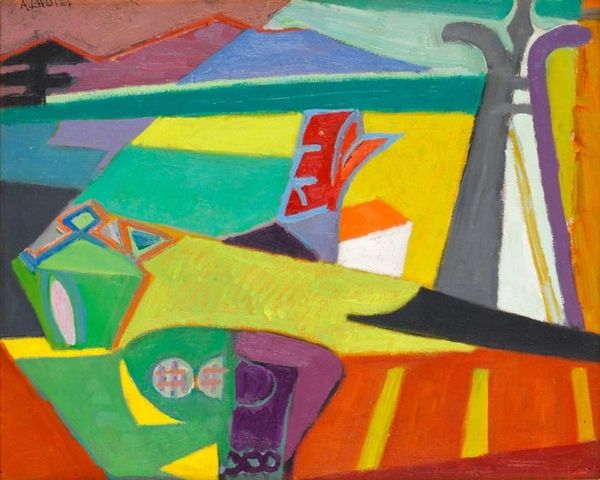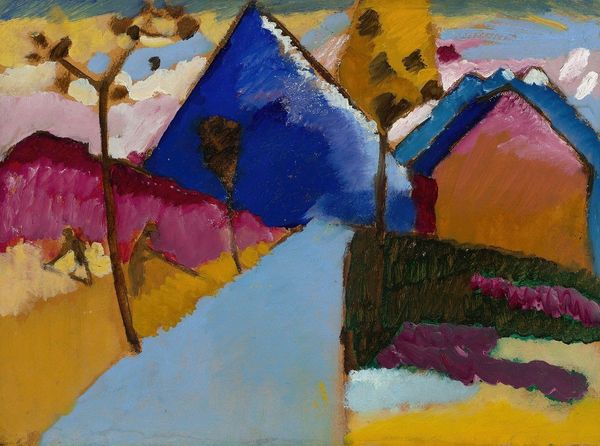
painting, oil-paint, mural
#
art-nouveau
#
abstract painting
#
fauvism
#
painting
#
oil-paint
#
landscape
#
german-expressionism
#
impressionist landscape
#
expressionism
#
abstraction
#
painting art
#
mural
#
expressionist
Copyright: Public Domain: Artvee
Curator: Let’s turn our attention to Wassily Kandinsky’s "Murnau – Mountain landscape with church," created in 1910. What's grabbing your attention? Editor: Immediately, the vibrant, almost aggressively joyful color. And look how thickly the paint is applied, a veritable impasto mountain range. You can almost feel the physical labor in the strokes. Curator: Indeed. Kandinsky's move toward abstraction was radical for the time. He's moving away from representing reality directly, and towards evoking emotion. This period in Murnau with other avant-garde artists was crucial in the development of his theories on art and spirituality. Editor: Spirituality, sure, but look at these pigments! This wasn't about some ethereal concept, this was about the very real cost of materials, the sourcing, the grinding, the physical manipulation of these vibrant hues that were becoming increasingly available because of industrialization. Curator: True, and those advances absolutely changed artistic possibilities. But think of the cultural context too – Kandinsky believed that art could express the "inner necessity," the spiritual experiences suppressed by a materialistic world. This resonated powerfully in pre-war Europe, questioning societal norms. Editor: But materiality itself offers access to spiritual experience. I imagine the act of painting this itself as a way of processing the overwhelming nature of the mountain in its immensity through manual, focused, concentrated labour and careful control over tools. This could be how one arrives at a “spiritual” moment. Look at the weight in those blues in the lower register— Curator: See, I find the pink in the sky so interesting; it doesn't "belong," yet it is essential to the composition. He's rejecting traditional representation to awaken a deeper response in the viewer. It challenges the institutions of the time promoting academic art. Editor: And at the same time the choice of a church for inclusion into a landscape could serve to underline that for the people in Kandinsky's landscape of Murnau these old and established religions also dictated their interaction with materiality! In its place Kandinsky seems to propose paint as a better substitute. Curator: Fascinating point. I still think understanding Kandinsky's belief system, the anthroposophical influence, is essential to unpacking the revolutionary power of this work. Editor: Maybe that says more about art historical priorities in general. Personally, it reminds me to remember labor is involved in making all things and nothing comes from thin air.
Comments
No comments
Be the first to comment and join the conversation on the ultimate creative platform.
